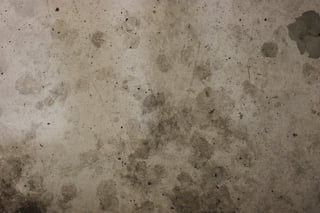 Does your facility have a moisture problem? Maybe you come in the morning to find a wet or damp concrete floor. Or worse, perhaps you just had your floors done in the last few months and have discovered your new floor coating is already peeling or blistering.
Does your facility have a moisture problem? Maybe you come in the morning to find a wet or damp concrete floor. Or worse, perhaps you just had your floors done in the last few months and have discovered your new floor coating is already peeling or blistering.
If you’ve already checked for leaks and have controlled for weather-related humidity but are still having issues, it could be that the moisture is coming through the concrete slab itself.
Causes of concrete slab moisture problems
Because concrete is a porous substance, water vapor is able to rise through it and into your building. In some cases, the moisture is coming from the ground beneath. If a proper moisture barrier wasn’t installed before the concrete was poured, water from the soil can easily transfer through the concrete—a particularly troublesome problem in regions where the ground stays damp throughout the year.
The water vapor could also be coming from the concrete itself. Water is a major component of the concrete mixing process, and it can take several months to a year for the concrete to properly cure (i.e. dry).
Risks of excessive moisture in concrete
Unchecked water vapor in a facility can lead to dangerous slippery floors, promote the growth of mold and even allow for microbial growth within the porous concrete.
In extreme cases, just putting a simple floor coating or sealant on the floors can actually make the problem worse. Simply blocking the vapor’s exit point may cause moisture levels in the slab to build up.
If moisture saturates the concrete to the level where it may dissolve minerals in the concrete, it can spell trouble. For example, if lye (sodium hydroxide) has been added to the concrete as a cement mixer, the high moisture levels will cause the lye’s to dissolve and raise its PH level to as high as 13 or 14—creating a destructive base that can eat through flooring adhesives and create blisters in the floor surface.
How moisture vapor control coatings help
The best solution, of course, is prevention—putting down the right moisture barriers before the concrete is poured, or allowing the concrete to cure properly over the course of several months or years. But if you’re the owner of an existing facility, this typically isn’t a practical option.
When you can’t address the large-scale issues causing excessive moisture buildup, the next-best solution is a moisture vapor control floor coating. Sometimes including multiple layers, moisture vapor control coating systems are strong enough to block all moisture vapor coming through the concrete, and, unlike most other coatings, can withstand the corrosive PH levels that destroy the bond with weaker coatings.
A moisture vapor control coating may be the only flooring your facility needs. It can also be laid down as a base for other coatings or for hardwood, tile, etc.
Is a moisture vapor control flooring right for my facility?
Every facility has its own set of unique characteristics, and there may be several factors that cause excessive floor moisture. You’ll need to get a professional concrete moisture test done first so you can know exactly which challenges you’re up against.
Once the problem is precisely defined, you’ll want to find a flooring expert who can recommend the moisture control coating that’s formulated to solve the particular issues for your floor. You’ll also want to hire a professional installation crew that can apply it correctly the first time.
If you’re in the Southeastern U.S. and would like a personalized consultation, give CPC a call at (864) 855-0600 and we’d be happy to answer any particular questions you might have.

